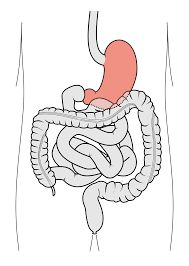Accidental Medical Discoveries
- Mahi Mahitcha

- Oct 10, 2022
- 2 min read
In the world of science, mistakes are costly. When you’re talking about the medical field, errors can have especially severe consequences and high price tags, potentially resulting in the loss of a life or livelihood. But, alas, some of the most pivotal advances in medical technology have come as a result of mishaps in the laboratory.
Laughing Gas
Laughing gas, or nitrous oxide, was discovered by an English scientist named Joseph Priestly in the late 1700s. He found that putting iron fillings into nitric acid had the side effect of releasing this gas, and upon inhaling it accidentally, found it to elicit calming, euphoric feelings. After it gained somewhat of a reputation as a recreational drug, the idea of using laughing gas as a surgical anesthetic finally came about in the 19th century. At first, it was used experimentally in a tooth extraction, and once found to be successful, was later adopted universally in dental practices.
The Coronary Angiogram
In the 1950s, imaging tests were performed on patients’ hearts by injecting dye in valves and chambers. Vessels, however, were feared to cause cardiac arrest if touched by this dye. This brings us to cardiologist F. Mason Sones, who was performing a routine test on a patient in 1958 when the catheter slipped and accidentally sent dye into an adjacent coronary artery, causing him to fear that his patient had died. Aside from a few skipped beats, however, the patient’s heart had remained completely normal and recovered immediately. This slip turned out to be revolutionary, improving modern techniques and forever changing the field of cardiac surgery.
The Implantable Pacemaker
A pacemaker is a small device that is implanted under the skin and generates electrical impulses to regulate one’s heartbeat, pumping blood properly throughout the body. Wilson Greatbatch, an engineer, unwittingly made this breakthrough when he installed the wrong resistor on an oscillator meant to monitor heartbeats. Soon, he realized that the device gave off a rhythmic vibration identical to a heartbeat. A few years later, this discovery was approved for human use and helped change the lives of those diagnosed with arrhythmias.
X-Rays
Thought to be a relatively modern technology, the X-Ray’s origins date back to the 1890s when a German physicist, Wilhelm Rontgen, was conducting an experiment with beams of electrons inside a vacuum tube. After an electric voltage was passed through the tube, a mysterious glow began to emanate from it. Rontgen named it “X” to indicate the unknown, and found it to pass through substances such as paper and human tissue, while denser substances like bone and metal absorbed it. The shadows of these objects were cast onto film, with the world’s first X-Ray photographs being taken of his wife’s hand.
Later on, X-Rays came into use in medicine, being used for medical imaging and treating cancers as early as 1896.



Comments